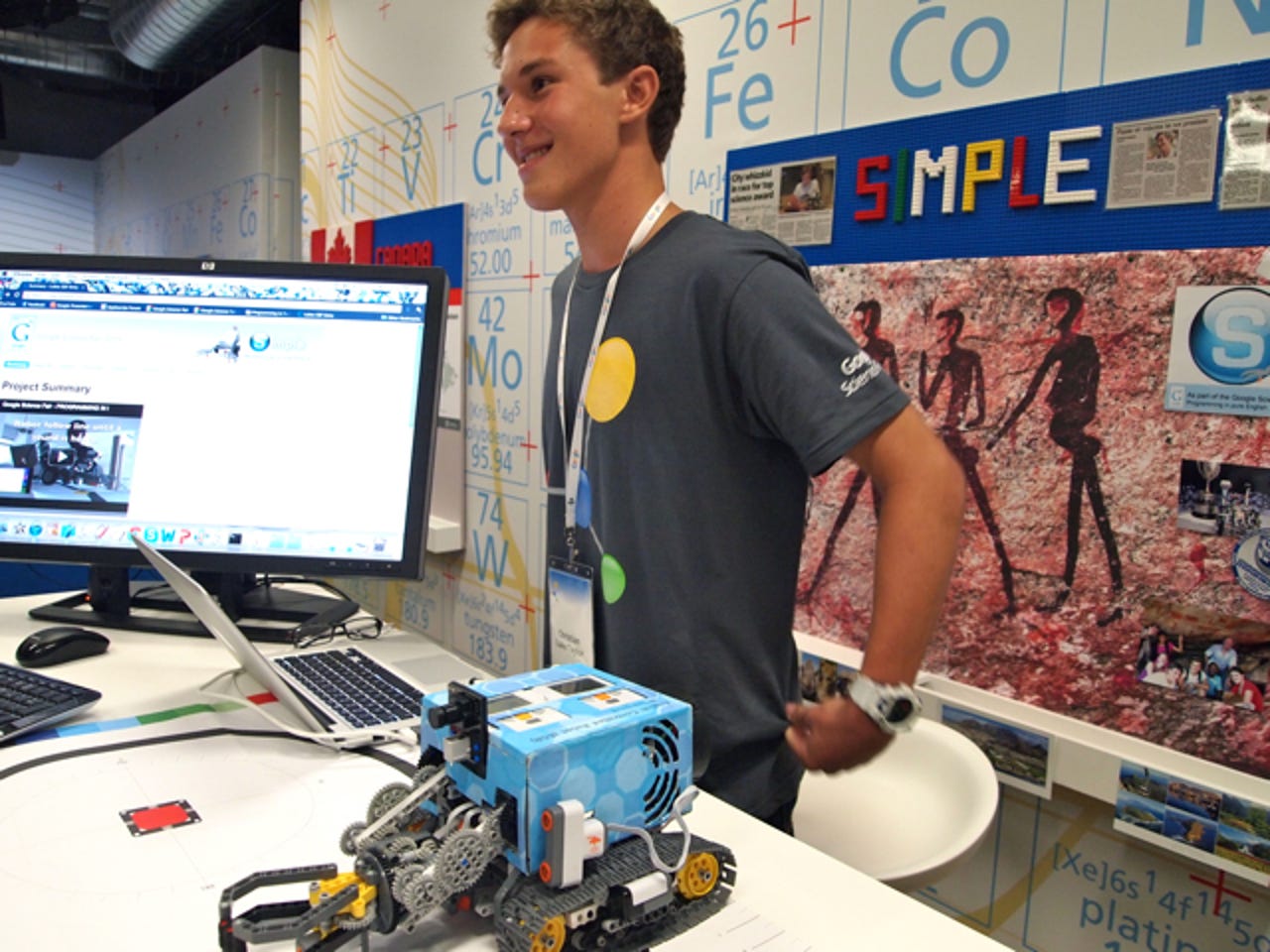Top 15 finalists from Google's international Science Fair

Daniel Arnold, 14 from San Diego, has been working on a new type of model for train tracks. According to his experiment, using the modified spring switch track (which incorporates an extra spring from the existing model already used worldwide today) would prevent train derailments almost entirely.
Vighnesh Shiv, 17 from Portland, Ore., developed a platform that automatically analyzes music and can idenfity the instrument and individual notes. This technology, he says, could also be used for other sounds to extract information. For example, it could be used for healthcare purposes to classify electrocardio analysis.
Gavin Ovsak, 17 from Hopkins, Minn., developed a new style of water turbines that can be fully submersed and put to use to generate electricity (even in homes) using access to local bodies of water (i.e. river or ocean tidal currants). The apparatus, which Ovsak built from cutting boards, uses a fin he designed that moves at the same speed as the water and allows for the turbine to perform at maximum efficiency. Because the fins move with the water and don't use blades, fish should still be able to swim through these turbines just fine.
Ovsak has already had conversations with General Electric and 3M, so perhaps we'll see more about this soon.
Matthew Morris, 18 from San Diego, designed a new sailboat structure using gravity and based on a hydrodynamic keel to keep the boat more balanced when traveling upwind and downwind.
Maybe Oracle should take a look at Matthew's project before the next America's Cup.
Skanda Koppula, 16 from Pittsburgh, has formulated a project based on two algorithms that are designed to better collect marine data (depth, in particular) for exploring and navigating large bodies of water. Some of the professions that could make use of this research include sea navigators and marine biologists.
Naomi Shah, 16 from Portland, Ore., has been researching the relationship between everyday toxins not included in the Clean AIr Act with asthma patients. Up until now, Shah has found that most of the research about asthma relates to age, gender and genetics. But Shah has found that a person's environment matters almost as much as several common pollutants hurt the lungs severely too.
Christopher Nielsen, 18 from Calgary, Alberta, is taking GPS another step further by implementing steroscopic cameras into robots charged with navigation. His results have produced accuracy in direction and navigation down to millimeters.
Lauren Hodge, 14 from York, Pa., might have something very valuable in store for Burger King, McDonalds and any other fast food chain with grilled chicken sandwiches. Basically, Hodge tested five different sauces with the intention of finding one that could reduce the number of carcinogens in grilled chicken when marinated first. Lemon juice proved to be the winner with the lowest pH count, while brown sugar and salt water worked alright as well. However, olive oil and soy sauce turned out to increased carcinogens.
Shaun Lim, 18 from Singapore, has discovered that sunflowers can actually kill. But perhaps that lethal power can be put to use. Shaun's study has found that increased UV levels stimulate the production of these chemicals that can harm some plants (i.e morning glory) while actually increasing the growth of other organisms nearby. Thus, there is the possibility that these chemicals could prove more useful than natural herbicides in certain situations. Shaun hopes that his research could be put to use to help solve the world food supply as well as used in pharmaceuticals.
Anand Srinivasan, 15 from Atlanta, has built a prototype that uses the application of EEG technology towards prosethetic devices. For example, Anand used the prototype, which was strapped to his head, to tell the mechanical arm he built to high-five himself. It worked. Anand says that this technology could be put to use for amputees and patients suffering from paralysis and muscular dystrophy.
Shree Bose, 17 from Fort Worth, Texas, has been studying drug resistance in ovarian cancer cells for two years. Her research has found that the AMPK, an activated protein enzyme, causes resistance to cisplatin, a chemotherapy drug used to treat the cancer. However, when controlled, the enzyme has the power to build resistance to the cancer, which could have profound affects on future ovarian cancer treatments.
Harine Ravichandran, 16 from Chennai, India, has found from her experiments on power line conditioning that multi-level inverters can overcome power shortages when connected to a single phase circuit.

Luke Taylor, 15 from Cape Town, South Africa, has developed a platform that translates English into computer code, which in turn directs a prototype robot that receives the translation and conducts the corresponding action. For example, tell the robot to move forward and backwards, and it will do it. It can also do more complicated tasks like pouring a glass of water.
Luke suggests that these robots could be used in hospitals in South Africa, particularly in remote areas, where there are less staff to treat patients.
Michelle Guo, 15 from Bergen County, N.J., has been studying how insulin sensitizers affects the brains of Alzheimer's patients. In particular, Guo has been looking at cinnamon, which she has found caused untreated cells to produce twice the amount of β-amyloid, a plaque found in the brains of these patients.